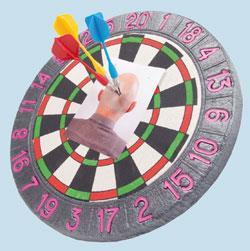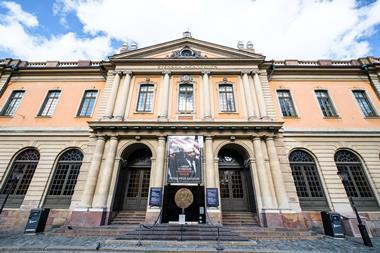Headhunters have a nose for who is right for a job but you can help yourself to be sniffed out, as Sarah Houlton finds out
Headhunters have a nose for who is right for a job but you can help yourself to be sniffed out, as Sarah Houlton finds out
If you’re a decade into your career and rising through the ranks, don’t be alarmed if you get a mysterious call from a headhunter. It’s rare to spot adverts for the more senior jobs - companies often engage an executive search agency to find the right person for them. And if you get that call, it means that someone, somewhere, thinks you’re good at what you do and the job might be a great next step for you.
To find the right candidate, the company and the headhunter first decide what attributes they are looking for. The search then starts in earnest, often by identifying the companies where suitable candidates might work. If a client is looking for someone for a specific therapeutic area, we need to know which companies are working in that area, says Andy Theodorou, who runs the pharma business at Alexander Mann Solutions in London.
Straight to the source
Headhunters will also talk to their sources, who are often more senior people. ’Many sources at that senior level are more willing to help - they see it as helping get an opportunity for someone they know who would benefit from it,’ he says.

Other ways to find potential candidates include conferences, publications, and even social networks. ’LinkedIn is a classic example - surprisingly, even very senior people put their details there,’ he says. ’We also search our database for similar assignments, and identify relevant candidates and sources.’
The database is a vital tool for Charlene Ledbetter, of New York-based Ledbetter Stevens. ’Our database now contains close to 150,000 records, and two million notes,’ she says. It includes the bulk of senior management in the biopharma space, and also many academics who are involved in clinical trials or pharma research.
Once a ’hit list’ has been established, the next step is that all-important call. ’The beauty of working through sources is you’re more likely to get a direct phone number rather than the switchboard,’ Theodorou says. ’We start off with a short conversation, maybe 10 or 15 minutes, to get a feel of how the person comes across,’ he says. ’After that, we email the assignment brief and ask them for a copy of their CV, before scheduling a more detailed conversation. If we feel they are suitable, we then have a detailed face-to-face interview, lasting 75 to 90 minutes, asking general questions about their background and testing their key functional and leadership competencies.’
Ledbetter stresses that they’re not just looking for technical capability - the skill of the headhunter is to find someone who will fit into the company’s culture. And that’s where the personal touch comes in - talking to people to find out what motivates them, and what sort of leader they are. ’A CV may be spectacular, but the person might be totally inappropriate for the role from a leadership perspective, or from a cultural fit perspective,’ she says. ’We find people with the blend of expertise, with the culture and the leadership that they’re looking for.’
These conversations with potential candidates help the headhunter pinpoint the ones most suited for the job, and they will then return to the client with a shortlist. ’We present a detailed report evaluating the candidates, and they will then decide who they want to meet,’ Theodorou says. And then it’s down to the candidate and the company to decide whether they are right for each other.
Networking a necessity
If you want to move your career onwards and upwards, it’s essential to network, says Theodorou. ’If you’re in your mid-level career, about 10 years after finishing a postdoc, you should be networking extensively so people outside your own organisation get to hear about you,’ he says.
Ledbetter draws an analogy between executive searching and high-throughput screening. ’We screen people to find the best fit for a company,’ she says. ’It takes a "nose" to find a drug - and it also takes one to find a leader. The search could take two months - or it could take 18 months. And every search is completely different as the right person for one organisation could be completely wrong for a similar role in another.’
Sarah Houlton is a freelance science writer based in London, UK












No comments yet